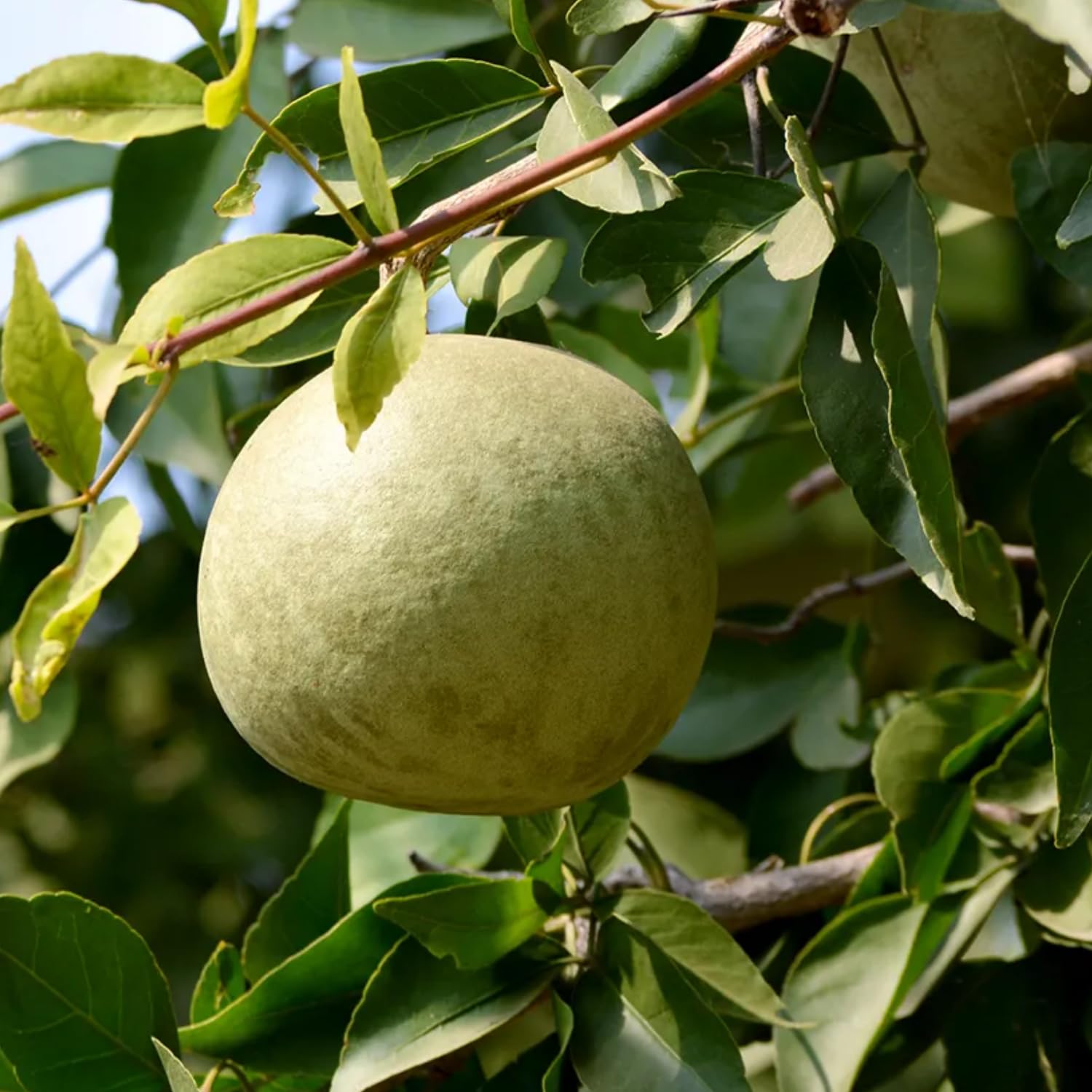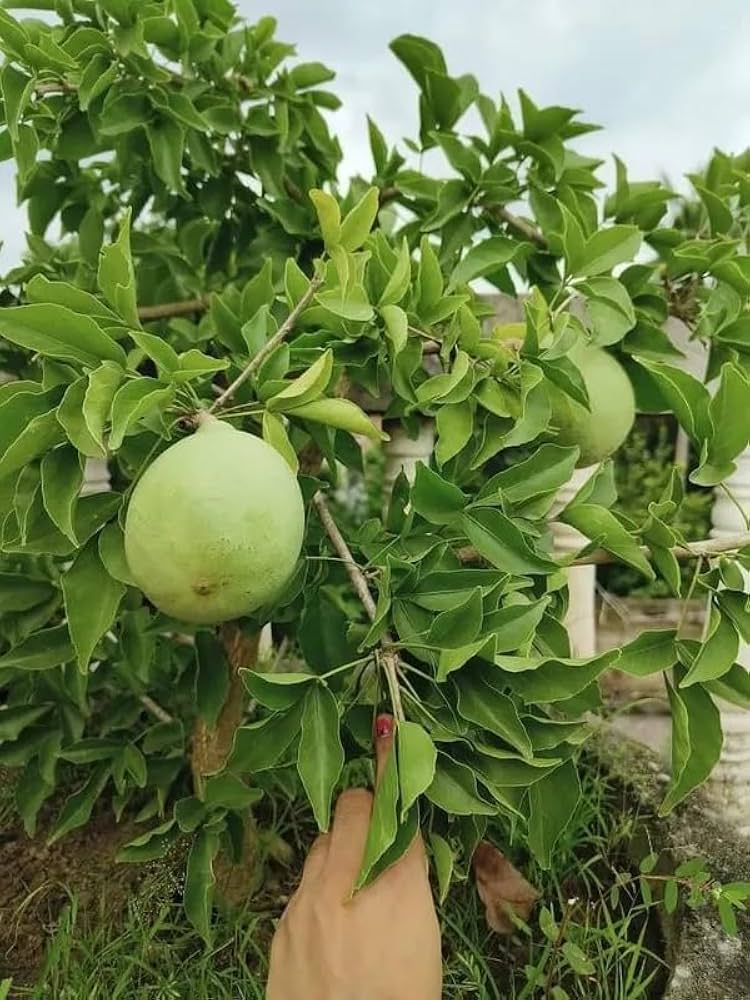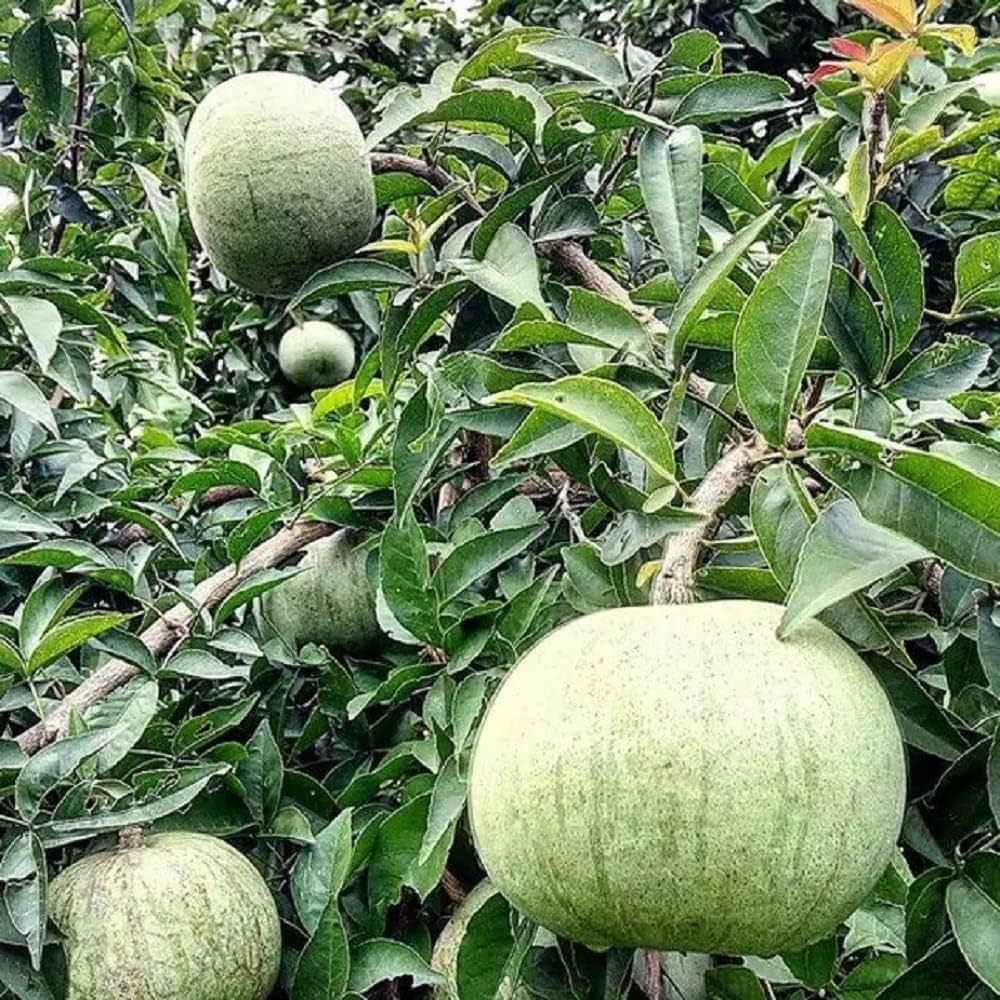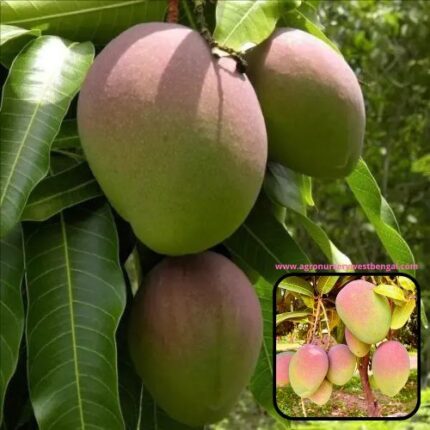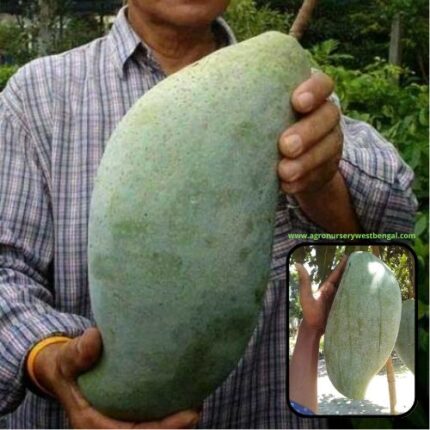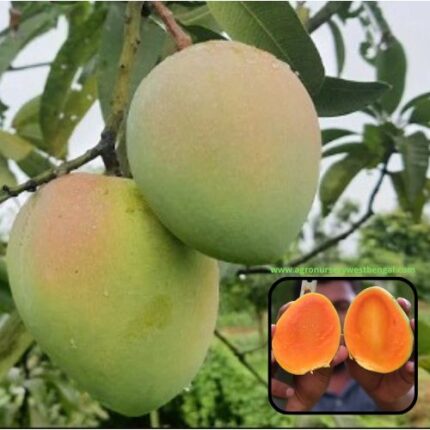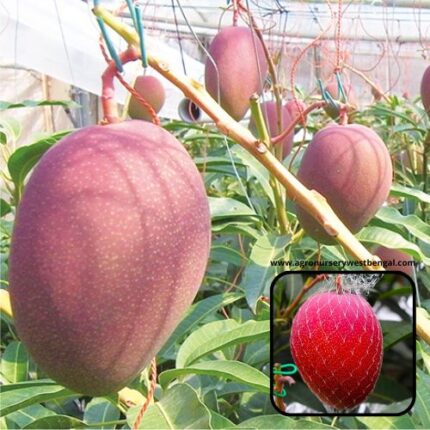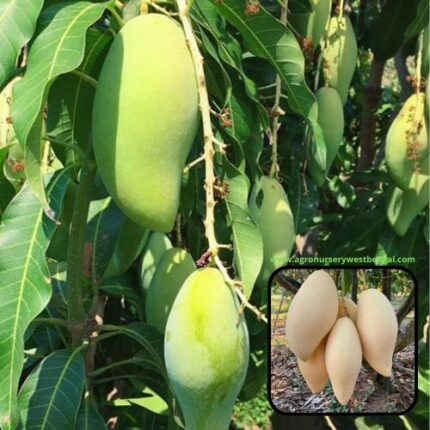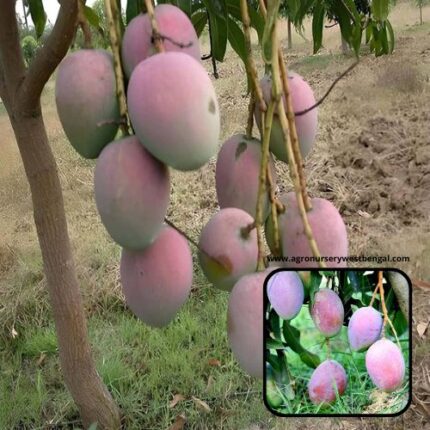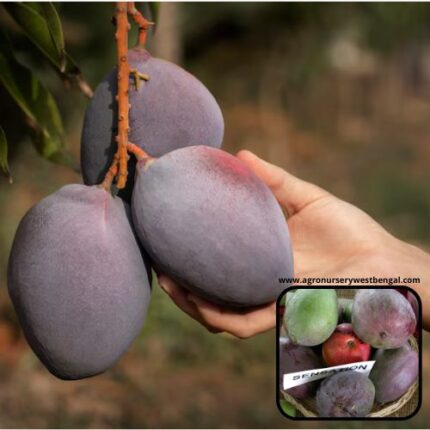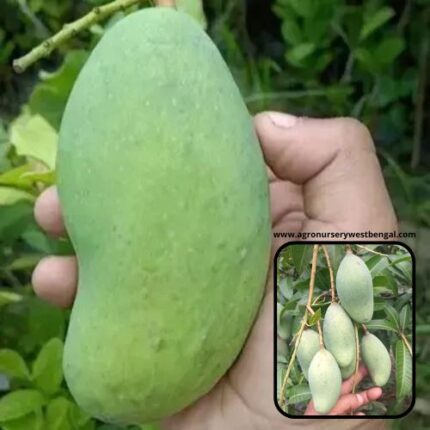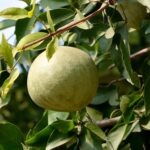
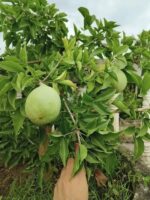
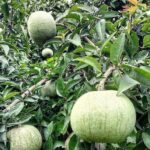
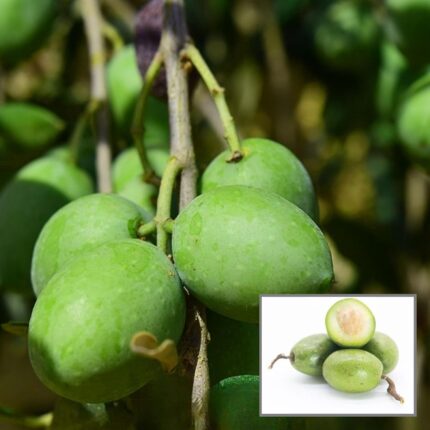
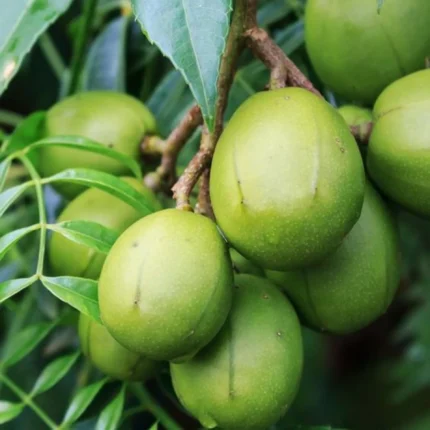
Thai BEL fruit plants
₹789.00 Original price was: ₹789.00.₹479.00Current price is: ₹479.00.
“Thai Bael fruit,” known as “Matoom” (มะตูม) in Thai, is the fruit of the Aegle marmelos tree, also commonly called Bael fruit, Bengal Quince, Golden Apple, or Stone Apple. It’s a highly revered fruit throughout Southeast Asia and the Indian subcontinent, particularly for its medicinal properties and unique aroma.
Here’s a detailed description of the Thai Bael fruit:
-
Appearance:
- Shape and Size: Bael fruit is typically round to oval or slightly pear-shaped, varying considerably in size, from that of an orange to a small grapefruit (5-20 cm in diameter), depending on the variety and cultivation.
- Skin (Rind/Shell): The most striking feature of a whole bael fruit is its incredibly hard, woody shell. It’s so tough that it often requires a hammer or machete to crack open. The color of the shell is dull greenish-grey when unripe, turning to yellowish or brownish when fully ripe.
- Internal Pulp: Once cracked open, the interior reveals a fibrous, sticky, and aromatic pulp. The color of the pulp ranges from yellow to deep orange, resembling a boiled pumpkin. It’s segmented, with thin, dark-orange walls.
- Seeds: Embedded within the pulp are numerous small, flattened-oblong, brown seeds. Each seed is encased in a transparent, sticky, slimy mucilage that solidifies upon drying.
- Aroma: Bael fruit possesses a distinct and strong sweet, floral, and slightly spicy aroma, often described as a blend of marmalade, citrus, and roses. This fragrance is a key characteristic.
-
Taste and Texture:
- Taste: The taste of ripe bael fruit is uniquely sweet and aromatic, with a subtle tanginess. It’s often likened to a mix of sweet papaya and sour lime, or even marmalade, with a characteristic floral, terpene-like flavor. The sweetness can vary greatly depending on ripeness and the specific cultivar. Unripe bael is highly astringent and sour.
- Texture: The pulp of a ripe bael fruit is sticky, fibrous, and somewhat pasty or creamy. It can be quite resinous. The seeds add a slight textural contrast.
-
Botanical Characteristics and Origin:
- Aegle marmelos belongs to the Rutaceae family (citrus family). It’s a slow-growing, deciduous tree that can reach 6-15 meters in height, with spreading, often spiny branches.
- It is native to dry forests of India, Sri Lanka, Bangladesh, Myanmar, and Thailand, where it has been cultivated for thousands of years, especially in India, due to its significant role in traditional medicine and religious practices.
- In Thailand, common cultivars include “Matoom Kai” (มะตูมไข่) and “Matoom Ban” (มะตูมบ้าน).
-
Seasonality:
- In tropical climates like Thailand, bael fruit can be available throughout the year, with peak seasons varying by region.
-
Nutritional Value and Health Benefits:
- Bael fruit is highly valued for its nutritional content and extensive use in traditional medicine (Ayurveda, Unani, Thai traditional medicine). It’s a good source of:
- Dietary Fiber: Both soluble and insoluble, aiding digestion and promoting gut health.
- Vitamins: Especially Vitamin C, Vitamin A (carotene), and B-complex vitamins (thiamine, riboflavin, niacin).
- Minerals: Calcium, phosphorus, potassium, and iron.
- Bioactive Compounds: Rich in antioxidants like coumarins (e.g., marmelosin), flavonoids, phenolic compounds, and alkaloids, which are believed to contribute to its medicinal properties.
- Traditional uses and purported health benefits include:
- Aiding digestion and treating diarrhea and dysentery (especially the unripe fruit due to its astringency).
- Having anti-inflammatory and antimicrobial properties.
- Being used as a tonic for various ailments.
- Potentially beneficial for managing blood sugar levels and promoting heart health.
- Cooling and refreshing, often consumed as a summer drink.
- Bael fruit is highly valued for its nutritional content and extensive use in traditional medicine (Ayurveda, Unani, Thai traditional medicine). It’s a good source of:
-
Culinary Uses:
- Fresh Consumption: Ripe bael fruit pulp is eaten fresh, sometimes mixed with sugar or jaggery. However, due to its sticky, somewhat pasty texture, it’s not typically a “table fruit” that is easily sliced and eaten like an apple.
- Beverages (Most Popular Use): In Thailand (and India), bael fruit is most famous for its use in making a refreshing drink called “Nam Matoom” (Bael fruit tea). This is typically made from dried slices of the fruit, which are boiled or steeped in hot water, often sweetened. It can be served hot or cold.
- Processed Products: The pulp is used to make:
- Marmalades, Jams, and Jellies: Its inherent flavor and pectin content make it suitable for these.
- Syrups, Nectars, and Squashes.
- Glacéd Fruit: Dried, preserved bael fruit in syrup is also common as a dessert or confectionery ingredient.
- Dried Slices: Dried bael fruit slices are widely available in markets in Thailand and other regions, primarily for making tea or for medicinal purposes.
The Thai Bael fruit, or Matoom, is a versatile fruit known for its hard shell, aromatic and sweet pulp, and significant health benefits, making it a staple in traditional food and medicine

